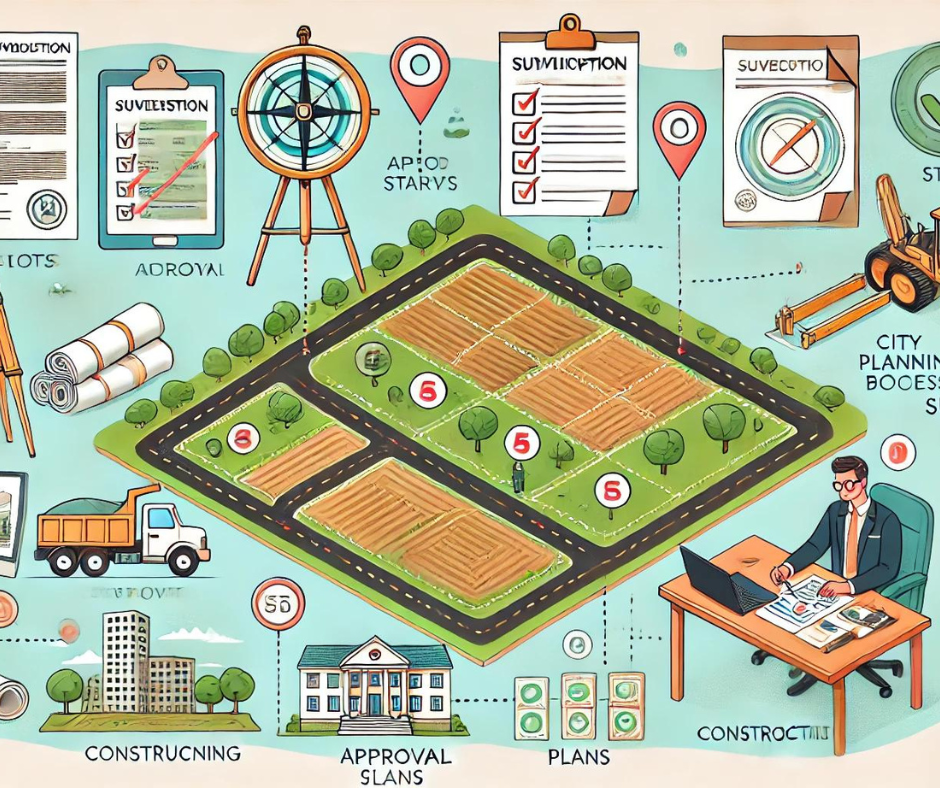Greetings, Savvy Landowners!
Navigating the land subdivision process can be a complex yet rewarding journey. Subdividing your property can unlock significant value and create new opportunities for development or sale. Whether you’re looking to sell individual parcels or develop the land yourself, understanding the steps involved in the subdivision process is crucial. In this blog, we’ll provide a step-by-step guide to help you through this process and ensure a successful outcome.
What is Land Subdivision?
Land subdivision is the process of dividing a larger parcel of land into smaller, individual lots. This process involves legal, regulatory, and physical changes to the property, often requiring approval from local authorities.
Why Subdivide Your Land?
There are several benefits to subdividing your land:
- Increased Value: Smaller lots can be sold at higher prices per unit area compared to a single large parcel.
- Development Opportunities: Subdividing land can make it more attractive for residential, commercial, or industrial development.
- Flexible Use: Allows for diversified use of the property, meeting different market demands.
Step-by-Step Guide to Land Subdivision
Initial Planning and Research
- Assess Feasibility: Determine if your land is suitable for subdivision by considering factors like size, shape, topography, and access to utilities.
- Zoning and Regulations: Research local zoning laws, subdivision regulations, and land use plans to understand the requirements and restrictions.
- Consult Professionals: Engage with surveyors, land planners, and real estate professionals to get expert advice on feasibility and potential challenges.
Preliminary Planning
- Conceptual Plan: Develop a preliminary layout of the subdivision, including the number of lots, their sizes, and the placement of roads and utilities.
- Environmental Assessment: Conduct environmental studies to identify any potential issues such as wetlands, flood zones, or endangered species habitats.
- Community Input: Engage with local communities and stakeholders to gather feedback and address concerns early in the process.
Submitting Applications
- Pre-Application Meeting: Schedule a meeting with the local planning department to discuss your preliminary plans and get feedback.
- Formal Application: Prepare and submit a detailed subdivision application, including site plans, environmental assessments, and any required studies or reports.
- Application Fees: Pay the necessary fees associated with the subdivision application.
Review and Approval Process
- Planning Department Review: The planning department will review your application for compliance with zoning laws, subdivision regulations, and environmental standards.
- Public Hearing: Attend public hearings where community members can express their views on the proposed subdivision.
- Approval Conditions: Address any conditions or modifications required by the planning department or other regulatory bodies.
Finalizing Plans
- Detailed Survey: Hire a licensed surveyor to conduct a detailed survey of the subdivided lots and prepare a final plat map.
- Engineering Plans: Develop detailed engineering plans for roads, drainage, utilities, and other infrastructure.
- Securing Permits: Obtain any necessary permits for construction, including grading, building, and utility permits.
Construction and Infrastructure Development
- Site Preparation: Clear the land, grade the site, and install necessary infrastructure such as roads, sidewalks, and utilities.
- Compliance Inspections: Schedule inspections at various stages of construction to ensure compliance with approved plans and regulations.
Final Approval and Recording
- Final Inspection: Once construction is complete, schedule a final inspection with the planning department.
- Approval and Recording: Upon passing the final inspection, the planning department will approve the subdivision, and the final plat will be recorded with the local land records office.
Marketing and Selling the Lots
- Marketing Strategy: Develop a marketing strategy to promote the newly subdivided lots, highlighting their features and benefits.
- Sales Process: Work with real estate agents to list and sell the individual lots, or market them directly to potential buyers.
Successfully Navigating the Subdivision Process
Subdividing your land can unlock its full potential and create new opportunities for development and sale. By following this step-by-step guide and working with experienced professionals, you can navigate the complexities of the subdivision process with confidence and achieve a successful outcome.
At Ardhi Sayari LLC, we’re dedicated to helping you through every stage of the land subdivision process. If you’re ready to explore the possibilities of subdividing your land, contact us today. Let’s work together to maximize the value of your property.
Happy subdividing!

